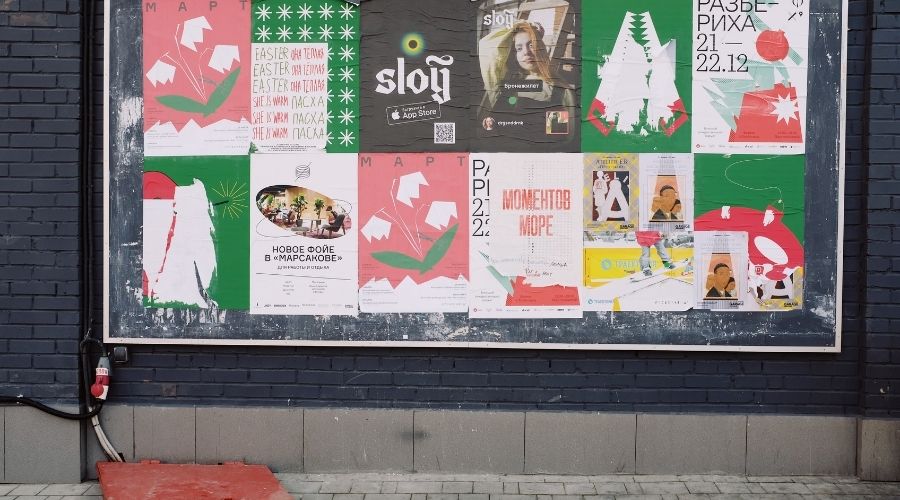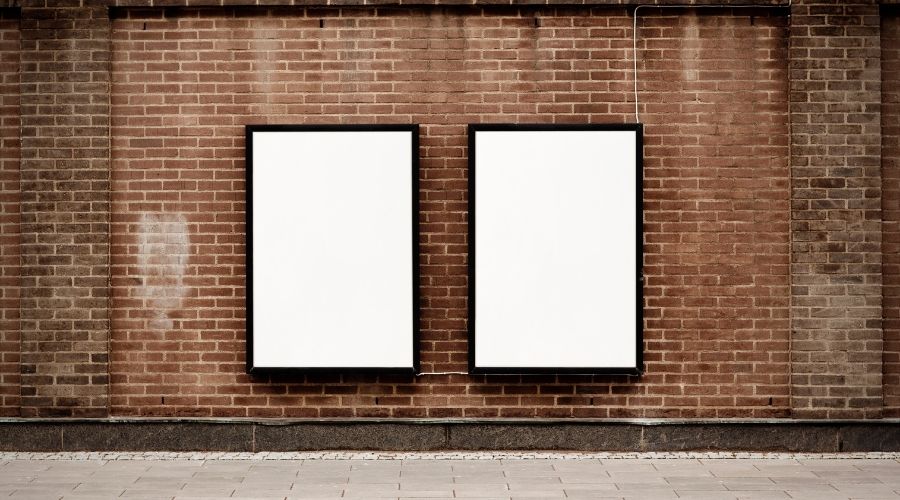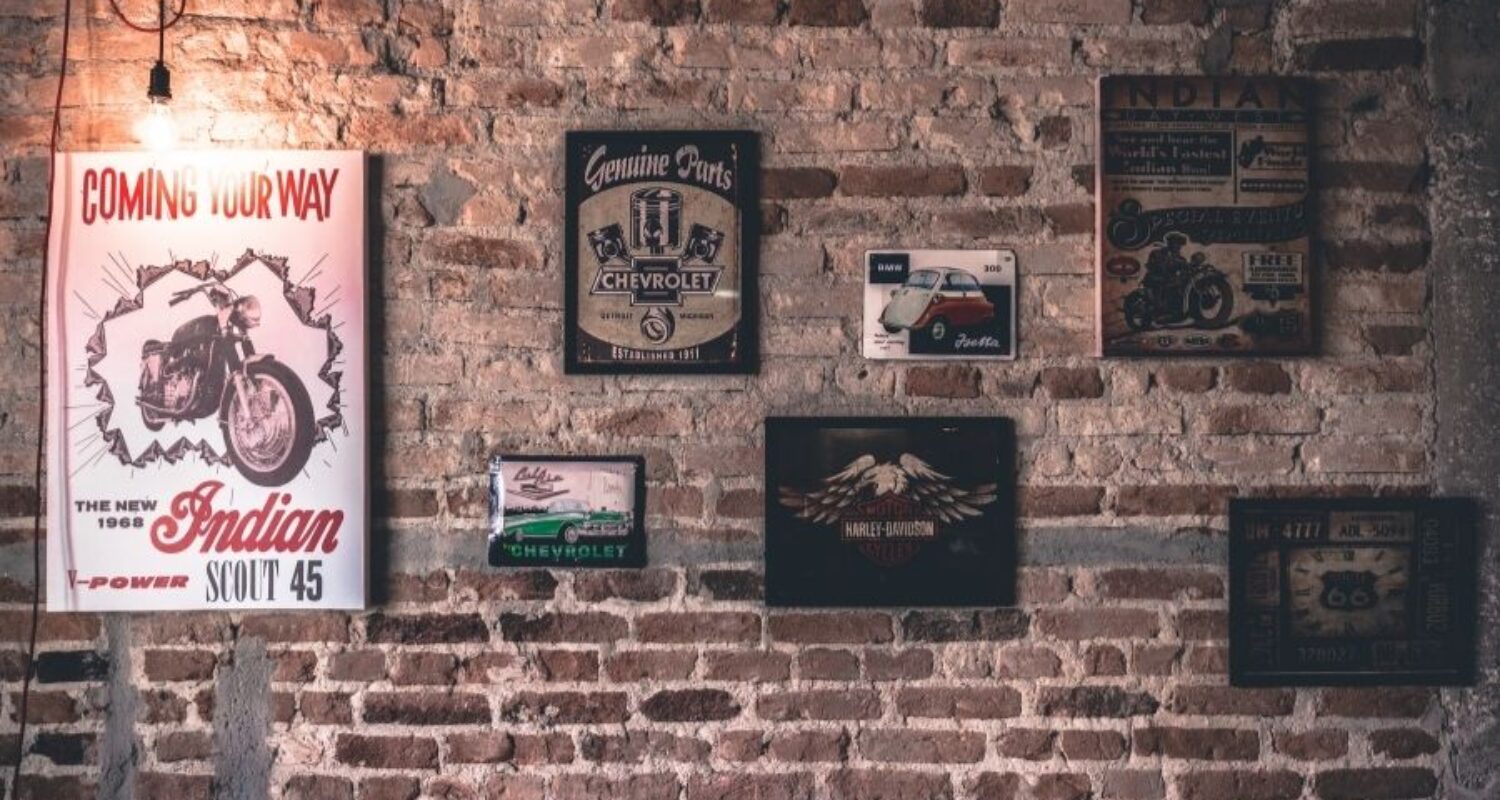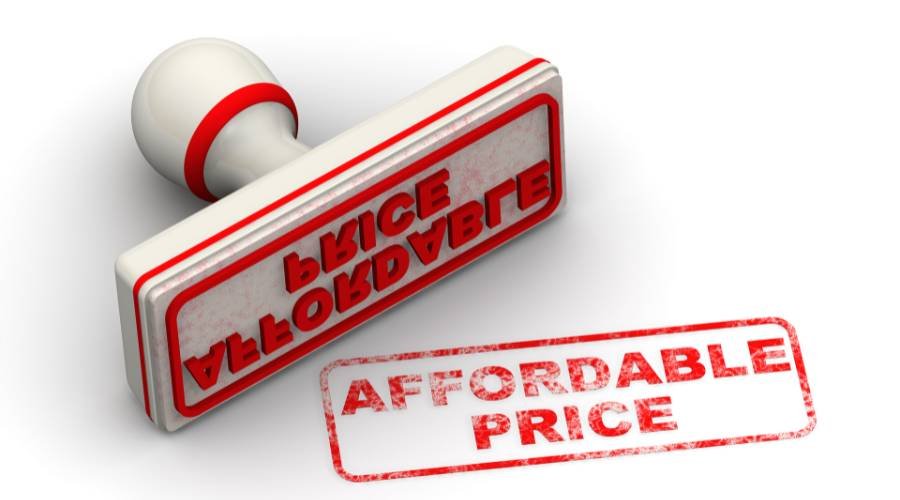Are you tired of your posters blending into the background? They fail to capture the attention of your target audience. In today’s visually-driven world, creating an eye-catching poster is key. It’s essential for promoting your message, event, or product effectively. But what are the secrets to designing a poster that stands out?
In this comprehensive guide, we’ll explore the key principles of poster design. We’ll cover understanding your purpose and target audience. We’ll also talk about choosing the right placement, color schemes, and typography. Whether you’re a seasoned designer or a novice, this article will give you the tools and insights. You’ll learn to craft visually stunning posters that leave a lasting impression.
Key Takeaways
- Effective poster design prioritizes clarity, visual hierarchy, and a focused message over cluttered visuals.
- Attention-grabbing headlines, bold typography, and high-quality imagery are essential for capturing the viewer’s interest.
- Understanding your target audience and the intended placement of the poster is crucial for optimizing the design.
- Leveraging professional poster templates can save time and ensure your design aligns with best practices.
- Experimenting with color psychology and visual textures can significantly enhance the overall impact of your poster.

Understanding the Purpose of Your Poster Design
Creating an eye-catching poster starts with knowing its purpose. What do you want to achieve with your poster? Are you promoting a new product, advertising an event, or launching a marketing campaign? Knowing your poster purpose, poster objectives, and poster goals helps guide your design. It ensures your poster gets your message across clearly.
Identifying the Goal
After figuring out your poster’s purpose, set specific goals. Do you aim to sell concert tickets, boost brand awareness, or spread the word about a cause? Your poster goals will influence the design’s visuals, content, and call-to-action.
Considering Your Target Audience
Understanding your target audience is key to a successful poster. Who do you want to reach with your message? Think about their demographics, interests, and needs. Creating customer personas helps you design a poster that speaks to your audience and prompts action.
| Poster Purpose | Poster Objectives | Poster Goals | Target Audience | Customer Personas |
|---|---|---|---|---|
| Advertise a new product | Increase brand awareness | Drive product sales | Working professionals aged 25-45 | Tech-savvy urban dwellers |
| Promote an upcoming event | Attract ticket sales | Sell out the event | Music enthusiasts aged 18-35 | Social media-active millennials |
| Highlight a marketing campaign | Educate the public | Encourage community engagement | Local residents of all ages | Environmentally conscious families |
“A poster’s purpose and target audience are crucial in determining its design – from the color scheme to the visual elements and call-to-action. Understanding these factors upfront will ensure your poster effectively communicates your message and resonates with the people you want to reach.”
Choosing the Right Poster Placement
When making posters, where you put them is very important. We need to make sure our posters look good both in print and online. This way, more people will see and interact with them.
Optimizing for Printed Poster Design
For print, think about where the poster will go. Use sizes like 11×17 inches or 18×24 inches for a professional look. Adding bleed marks makes the edges look smooth and finished.
Optimizing for Social Media
Today, posters also need to look good online. Make sure your poster fits the right size for Facebook, Twitter, or Instagram. This makes your poster stand out and reach more people.
“Customized printed posters are stated as being a cost-effective and powerful advertising medium for small businesses.”
By thinking about where your poster will go, both in real life and online, you can make a strong marketing plan. This plan will connect with your audience in a meaningful way.
Starting with a Professional Poster Template
Creating a poster from scratch can take a lot of time. But, using a professional poster template can give you a good start. These templates have layouts, colors, and designs ready to go. You can change them to fit your poster’s needs.
It’s key to pick a template that matches your poster’s purpose and audience. Also, think about where it will be seen, whether it’s for print or online.
There are many poster design tools and online poster maker sites. They offer lots of pre-designed posters and poster templates. You can find sizes like 30×40 and 36×72, and even international sizes like 91×122.
Some sites also have special templates for trifold posters and QR codes. They even offer options for fabric posters that are easy to carry.
| Poster Template Features | Benefits |
|---|---|
| Wide range of pre-designed templates | Cater to various industries and needs |
| High level of customizability | Easily swap images, edit text, fonts, colors, and rearrange layouts |
| Intuitive drag-and-drop interface | Simplifies the creation process for users of all skill levels |
| Accessibility features | Ensure ease of use and sharing for a diverse audience |
| Branding alignment tools | Effortlessly incorporate brand colors, logos, and fonts |
Using professional poster templates helps you make posters that grab attention. They help you share your message clearly and quickly. Plus, they make sure your brand looks good and consistent.
Crafting an Effective Color Scheme
In poster design, color is incredibly powerful. It can influence up to 90% of our instant decisions. This makes colors key in grabbing attention and encouraging action. By using color psychology, we can make color schemes that connect with our audience and set the right mood.
Using Color Psychology
Different colors trigger different emotions and meanings. Warm colors like red and orange push us to act fast. Cool colors like blue and green help us think calmly. For instance, red is linked with excitement and urgency, perfect for sales or events.
Blue, however, brings trust and security, making it great for finance, tech, and health. It helps build a professional image.
Creating Cohesive Color Palettes
Creating a unified color palette is vital for a striking poster. Try a complementary color scheme for a bold contrast. Make sure your text and images are clear and accessible to everyone.
Test your design at different sizes and angles to see how it looks. Getting feedback from your audience and others can also improve your color choices. This way, you can make a poster that really stands out.
Incorporating Texture and Visual Interest
Adding texture and visual interest to posters can really make them stand out. Texture adds depth and dimension, making designs more appealing. This is especially true in fashion, where it can boost customer engagement and brand image.
Texture breaks the monotony of flat designs, making them more engaging. This is key in interior design and home decor, where looks matter a lot. Rough textures suggest strength, while smooth ones convey elegance.
Texture also plays a big role in showing a brand’s identity. It’s important to match textures with a brand’s values and personality. This is especially true for eco-friendly products or high-end services, helping them connect with their audience.
There are many types of texture in design, from simulated to real. This variety is great for food packaging, allowing for unique designs for each product. Designers can use traditional methods like screen printing or digital tools to create textures.
Trying out unusual textures can add creativity to designs. This is super helpful in advertising or entertainment, where being unique is key.
By using texture and other visual elements, designers can make posters that grab attention. These posters are not just pretty; they engage the audience and deliver the message effectively.

Poster Design: Mastering Typography
Typography is key in making posters stand out. The right fonts and a clear typographic order are crucial. They help grab your audience’s attention and guide them to take action.
Choosing Readable Fonts
Start by picking fonts that are easy to read from afar. 88% of successful posters have clean, simple designs. Choose fonts that are both readable and visually appealing. This ensures your message is clear to your audience.
Establishing a Typographic Hierarchy
A clear typographic hierarchy is vital. It guides the viewer’s eye and highlights important info. Contrast is key in grabbing attention and improving readability. Use a bold headline, followed by subheadings and body text. This structure helps your audience understand your message.
| Typography Element | Recommended Characteristics |
|---|---|
| Headline | Large, bold, and eye-catching |
| Subheadings | Slightly smaller than the headline, but still prominent |
| Body Text | Clean, readable, and appropriate for the viewing distance |
The typography you choose greatly affects your poster’s success. Focus on selecting the right fonts and organizing them well. This way, your posters will engage your audience and deliver your message effectively.
Selecting Impactful Imagery
When making posters, the images you pick are key to grabbing people’s attention. Make sure any photos or drawings are high-quality images and clear. Bad images can mess up your message.
Using negative space wisely is also crucial. This means leaving some parts of the design empty. It helps focus the viewer’s eye on what’s most important and makes the design look balanced.
Working with High-Resolution Images
Choose high-resolution images for your posters. They should stay sharp when printed big. Look for images with 200 to 300 pixels per inch (ppi) for the best look.
Utilizing Negative Space
Using negative space in your design can make a difference. It helps highlight the most important parts of your poster. Try out different layouts to find the perfect mix of empty and filled spaces.
“High-quality, visually striking images play a crucial role in determining the effectiveness of a poster design, as they have the power to evoke emotions and effectively communicate messages.”
Choose images that are not only good-looking but also support your message. By picking the right images and using negative space well, your poster will grab attention and make a strong impression.
Poster Design: Vital Design Principles
Designing posters is more than just making them look good. At the core of a great poster are key design principles. These principles help us create visuals that grab attention and clearly share our message.
Creating a clear visual hierarchy is crucial. This means arranging elements in a way that guides the viewer’s eye. By using size, placement, and contrast, we highlight important parts and make the poster’s purpose clear.
Keeping a balanced composition is also key. Whether it’s symmetrical or not, the design should feel harmonious. We achieve this with negative space, focal points, and the way shapes and lines interact.
Using contrast is another vital principle. By mixing different sizes, colors, and fonts, we add interest and highlight key points. This makes the poster pop, grabs attention, and boosts its overall impact.
| Design Principle | Description | Examples |
|---|---|---|
| Visual Hierarchy | Strategically arranging elements to guide the viewer’s eye and emphasize the most important information. | Varying font sizes, strategic placement of text and images, use of contrast and whitespace. |
| Composition | Maintaining a balanced and visually harmonious arrangement of design elements. | Symmetrical or asymmetrical layouts, effective use of negative space, positioning of focal points. |
| Contrast | Juxtaposing elements of varying size, color, and typographic treatment to create visual interest and emphasis. | Contrasting font styles, color palettes, and the interplay of large and small elements. |
By applying these design principles, we can make posters that grab attention and share our message well. Using visual hierarchy, balanced composition, and striking contrast helps our designs stand out. This leaves a lasting impression on our audience.
Crafting a Clear Call-to-Action
Creating eye-catching posters for events, sales, or information is key. The call-to-action (CTA) is crucial. It invites your audience to act, like attending an event or buying something. A clear CTA can greatly increase the response you get.
First, think about what you want to achieve. Do you want people to attend an event, buy something, or learn something new? Knowing your goal helps you create a CTA that speaks to your audience. A good CTA can help with decision fatigue and give meaning to your content, creating a sense of urgency that can boost conversions.
Use words like “Buy” or “Try” in your CTA. Add adjectives and promises to make it more engaging. This can make people feel something and want to act.
Test your CTA to see if it works. A/B testing can help you find the best CTA for your audience. Think about how your audience uses mobile devices. Their actions might be different than those on desktops or tablets.
“A good CTA can help with decision fatigue and give meaning to your content, creating a sense of urgency that can boost conversions.”
By making your CTA clear and compelling, you guide your audience to take action. This can help you meet your poster’s goals, whether it’s promoting an event, selling something, or sharing information.
Conclusion: Putting it All Together
By following the steps in this guide, we can make posters that grab attention. They can share our message and draw in our audience. We’ve learned how to pick the right spot for our poster and use colors, fonts, and images well.
It’s important to think about who we’re making the poster for. We should use design rules and try new things to find the best design. This guide has given us the tools to make posters that look professional and meet our goals.
Let’s use what we’ve learned to make posters that inform and excite people. With creativity and the right strategies, we can make posters that inspire. So, let’s get started on making posters that engage and connect with people in Australia.
FAQ
What is the purpose of creating a poster?
Posters grab attention for sales, events, and fundraisers. Knowing your goal, like promoting a new product or sale, helps guide your design.
How important is considering the target audience when designing a poster?
It’s very important to think about who you’re trying to reach. Designing for different groups can make your poster more effective.
What are the key considerations for optimizing a poster for print versus social media?
For print, think about where the poster will be seen and use standard sizes. For social media, size your poster for each platform to look great online.
What are the benefits of using a professional poster template?
Professional templates offer a solid base. They have layouts, colors, and design elements ready to customize for your poster.
How can color psychology be leveraged in poster design?
Colors set the mood and guide the viewer’s eye. Using color psychology can make your design more impactful.
What role does texture play in a poster design?
Textures like splatters or patterns add depth and interest. They help draw the eye to key parts of the poster.
What are the key considerations for selecting typography in a poster design?
Choose fonts that are clear from a distance. Use a typographic hierarchy to organize information and guide the viewer’s attention.
How can high-quality imagery and negative space impact a poster design?
High-resolution images are essential for a sharp look. Negative space helps focus attention on important elements, creating balance.
What are the fundamental design principles that should be considered in poster design?
A clear hierarchy, balance, and contrast are key. They make your poster impactful and effective.
Why is a clear call-to-action (CTA) important in a poster design?
A clear CTA encourages action, like visiting a website or buying something. A strong CTA aligns with your poster’s purpose.




